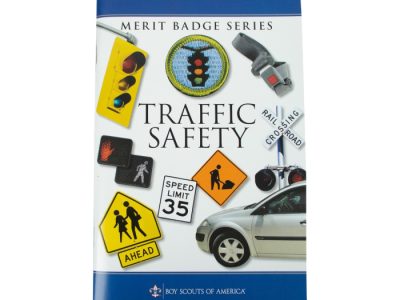Nuclear science merit badge experiments, a fascinating realm of exploration, invite us on a journey into the enigmatic world of nuclear science. These meticulously designed experiments not only ignite a passion for science but also foster a deep understanding of the fundamental principles that govern the atomic nucleus.
Through hands-on experimentation, aspiring scientists embark on an educational adventure, unraveling the mysteries of radioactivity, nuclear reactions, and the practical applications of nuclear science in diverse fields.
Experiments in Nuclear Science Merit Badge
The Nuclear Science Merit Badge program provides Scouts with an opportunity to explore the fascinating field of nuclear science through a series of hands-on experiments. These experiments are designed to teach Scouts about the basics of nuclear physics, including the structure of atoms, the properties of radiation, and the applications of nuclear technology.
One of the most important experiments in the Nuclear Science Merit Badge program is the cloud chamber experiment. This experiment allows Scouts to see the tracks of charged particles as they pass through a cloud of water vapor. The cloud chamber experiment is a great way to learn about the properties of radiation and how it interacts with matter.
Another important experiment in the Nuclear Science Merit Badge program is the Geiger counter experiment. This experiment allows Scouts to measure the amount of radiation in the environment. The Geiger counter experiment is a great way to learn about the different types of radiation and how to protect oneself from radiation exposure.
The Nuclear Science Merit Badge program also includes a number of other experiments, such as the electroscope experiment, the scintillation counter experiment, and the nuclear reactor experiment. These experiments are all designed to teach Scouts about the different aspects of nuclear science and how it is used in the real world.
Safety Considerations

Nuclear science experiments involve working with radioactive materials, which can pose potential hazards. Therefore, it is crucial to prioritize safety throughout the experimental process.
Radioactive materials emit ionizing radiation, which can penetrate living tissues and damage cells. Exposure to high levels of radiation can cause acute health effects such as radiation sickness, burns, and organ damage. Long-term exposure can increase the risk of cancer and other chronic health conditions.
Safety Protocols and Procedures, Nuclear science merit badge experiments
To ensure the safety of individuals conducting nuclear science experiments, strict protocols and procedures must be followed. These include:
- Wearing appropriate protective gear, such as gloves, lab coats, and safety glasses, to minimize exposure to radiation.
- Using shielded containers and handling radioactive materials in designated areas to prevent the spread of contamination.
- Monitoring radiation levels regularly using radiation detectors to assess potential exposure.
- Receiving training and supervision from qualified professionals who are knowledgeable about radiation safety.
li>Following proper disposal procedures for radioactive waste to prevent environmental contamination.
By adhering to these safety protocols, individuals can minimize the risks associated with working with radioactive materials and ensure a safe experimental environment.
Radioactivity and Nuclear Reactions

Radioactivity is the process by which an unstable atomic nucleus loses energy by emitting radiation. This radiation can be in the form of alpha particles, beta particles, or gamma rays. Alpha particles are helium nuclei, beta particles are electrons or positrons, and gamma rays are high-energy photons.Nuclear
reactions are processes that involve changes in the structure of atomic nuclei. These reactions can be either spontaneous or induced. Spontaneous nuclear reactions occur naturally, while induced nuclear reactions are caused by the interaction of a nucleus with an external particle, such as a neutron or proton.There
are many different types of nuclear reactions, but the most common are:
Nuclear fission
This is a process in which a heavy nucleus splits into two or more smaller nuclei. Nuclear fission is the process that is used in nuclear power plants.
Nuclear fusion
This is a process in which two or more light nuclei combine to form a heavier nucleus. Nuclear fusion is the process that powers the sun and other stars.Nuclear reactions are used in a variety of applications, including:
Nuclear power
Nuclear power plants use nuclear fission to generate electricity.
Medical imaging
Nuclear medicine uses radioactive isotopes to diagnose and treat diseases.
Industrial applications
Nuclear reactions are used in a variety of industrial applications, such as gauging the thickness of materials and sterilizing food.The experiments in this merit badge will introduce you to the basics of radioactivity and nuclear reactions. You will learn how to measure radioactivity, how to identify different types of radiation, and how to use nuclear reactions to perform a variety of tasks.
Radiation Detection and Measurement

Radiation detection and measurement play a vital role in understanding and managing the risks associated with radiation. These techniques enable scientists, engineers, and health professionals to quantify the levels of radiation present in various environments, assess potential hazards, and implement appropriate safety measures.
Types of Radiation Detectors
There are several types of radiation detectors, each designed to detect specific types of radiation and energy ranges. Some common detectors include:
- Geiger-Mueller (GM) counters: Detect gamma and X-rays.
- Scintillation detectors: Detect gamma rays and charged particles.
- Ionization chambers: Measure the ionization caused by radiation.
li> Semiconductor detectors: Detect charged particles and gamma rays.
Methods of Radiation Measurement
Radiation levels are typically measured using specialized instruments that quantify the intensity and energy of radiation. These methods include:
- Counting methods: Measure the number of radiation particles detected over a specific period.
- Dosimetry: Measures the absorbed dose of radiation, which is the amount of energy deposited per unit mass of material.
- Spectroscopy: Analyzes the energy distribution of radiation, providing information about the type and energy of the radiation source.
Interpreting Results
Interpreting the results of radiation measurements requires an understanding of the detector’s characteristics and the specific radiation environment being measured. Factors such as detector efficiency, background radiation levels, and the energy dependence of the detector must be considered to accurately assess the radiation levels and their potential impact.
Applications of Nuclear Science
Nuclear science has revolutionized various fields, bringing advancements that have profoundly impacted society. From medicine to energy production and environmental monitoring, nuclear science has played a crucial role in improving our lives.
Medicine
In the medical realm, nuclear science has led to groundbreaking advancements. Radiotherapy, utilizing radiation to target and destroy cancer cells, has become a vital treatment option for various types of cancers. Nuclear medicine employs radioactive isotopes to diagnose and treat diseases, enabling early detection and targeted therapies.
Energy Production
Nuclear power plants harness the energy released from nuclear reactions to generate electricity. This clean and efficient energy source contributes significantly to meeting global energy demands. By utilizing nuclear fission, nuclear power plants produce vast amounts of energy with minimal carbon emissions, making them an important component of sustainable energy strategies.
Environmental Monitoring
Nuclear science has also proven invaluable in environmental monitoring. Radioactive isotopes serve as tracers, allowing scientists to track the movement of pollutants and study environmental processes. Radiation detection technologies enable the identification and measurement of radioactive materials in the environment, facilitating the assessment and mitigation of potential risks.
Ethical and Societal Implications
Nuclear science, while offering immense potential for advancements, raises significant ethical and societal concerns. Understanding these implications is crucial for responsible decision-making and ensuring the safe and beneficial use of nuclear technology.
The ethical concerns surrounding nuclear science primarily revolve around the potential for its misuse, leading to devastating consequences. The destructive power of nuclear weapons and the risks associated with nuclear accidents pose significant threats to human lives and the environment.
Additionally, the long-term effects of nuclear waste disposal and the potential for nuclear proliferation are major ethical challenges.
Benefits and Risks of Nuclear Technology
Nuclear technology offers numerous benefits, including the generation of electricity, medical advancements, and scientific research. Nuclear power plants provide a reliable and low-carbon source of energy, helping to mitigate climate change. In medicine, nuclear techniques enable the diagnosis and treatment of various diseases, such as cancer.
However, these benefits must be weighed against the potential risks, including the catastrophic consequences of nuclear accidents, the health hazards associated with radiation exposure, and the long-term management of nuclear waste.
Nuclear Proliferation and Waste Disposal
Nuclear proliferation refers to the spread of nuclear weapons and technology to non-nuclear states. This poses significant risks to international security and stability. Nuclear waste disposal is another major concern, as the long-lived radioactive materials generated by nuclear power plants and weapons require safe and secure storage for thousands of years.
Closing Summary

As we conclude our exploration of nuclear science merit badge experiments, it becomes evident that this field of study extends far beyond the realm of academic curiosity. It holds immense potential for shaping our future, offering solutions to pressing global challenges and fueling technological advancements that will undoubtedly impact generations to come.
Q&A: Nuclear Science Merit Badge Experiments
What are the primary objectives of nuclear science merit badge experiments?
These experiments aim to foster an understanding of nuclear science principles, including radioactivity, nuclear reactions, and their practical applications.
Why is safety paramount in conducting nuclear science experiments?
Radioactive materials pose potential hazards, necessitating strict adherence to safety protocols and procedures to minimize risks.
How do nuclear science merit badge experiments contribute to society?
These experiments provide a foundation for future scientists and engineers, who will play a crucial role in harnessing nuclear science for the betterment of humanity.





